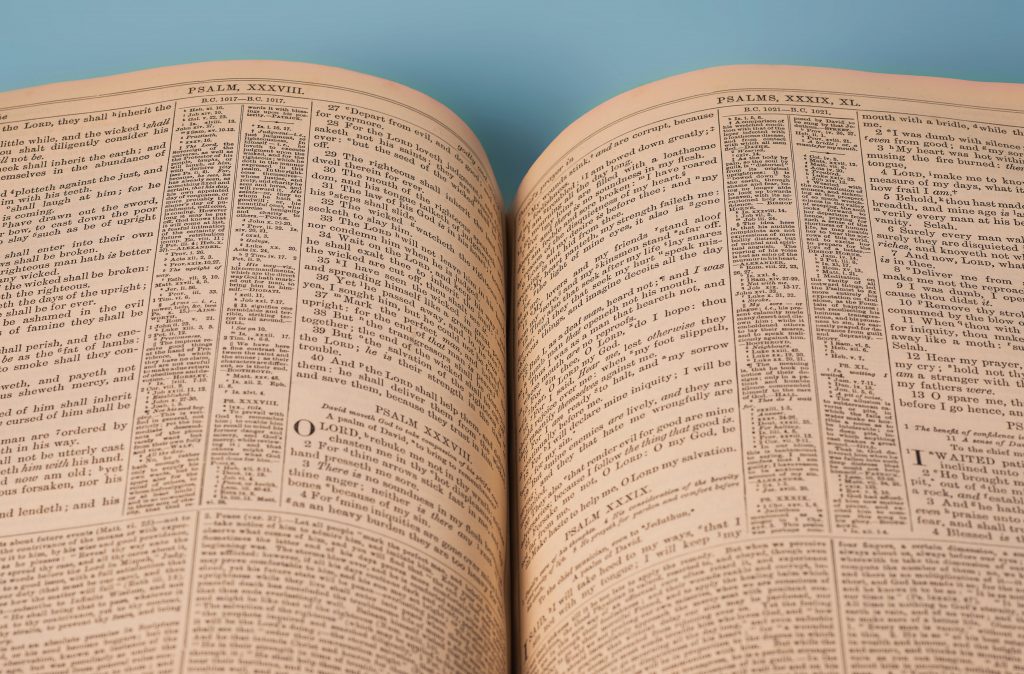‘Pastor, which Bible translation is the best?’ I’m not a betting man. But if I were, I would bet my bottom dollar that most pastors will admit to running up against this question on a regular basis. The most candid will even admit that they’ve wrestled with this matter themselves. Some issues in the church are perennial — going back to the very beginning and returning year after year, generation after generation — for God’s people to grapple with in their own time and place. Others are unique to particular generations — issues our ancestors in the faith would never have dreamed of. When it comes to choosing a Bible translation, the latter category no doubt best describes the current situation. And why? Well, to begin with, there are today no less than sixty-eight different versions of the Bible available in the English language. For better or for worse, we are spoiled for choice.
This article marks the first in a series of posts that will, over the next several months, dive into the exciting — yet at times overwhelming — world of English Bible translations. God has blessed English-speaking people the world over with Bible riches that no other language has yet come close to experiencing. But, as Jesus reminds us:
From everyone who has been given much, much will be required; and from the one who has been entrusted with much, even more will be expected.
Luke 12:48 CSB
We do well to begin by expressing our gratitude to the One who has been pleased to bestow upon us such riches. At the same time, we must think soberly, knowing that a generation possessing God’s Word as richly as we do, will one day have to give an account for how we have made use of this “inestimable treasure, which excelleth all the riches of the earth” (Epistle Dedicatory of the AV/KJV).
The history of English Bible translation goes back to the earliest days of the Protestant Reformation. This does not mean, however, that translation of the Christian Scriptures was not being done prior to that. In fact, Bible translation was a necessity thrust upon the church from the very beginning, as the common Greek of the New Testament and the Old Testament Septuagint (LXX) became less and less familiar, as Latin established its dominance in the western empire following the close of the Christian canon. The Hebrew/Aramaic of the Old Testament was even further outside the reach of the majority of early Christians. Thus, Bible translation was a necessity laid upon the church from the very beginning. However, it was not without controversy.
As early as the 4th century, Augustine bemoaned the fact that, as he saw it, anyone who deemed himself moderately competent in Greek and Latin took it upon himself to translate the New Testament. The result of this, lamented Augustine, was a steady stream of poorly translated Latin Bibles flooding into the church (Metzger, 31). Augustine wasn’t the only one to recognize this unhealthy proliferation of Latin Bibles in the early church. By 383 AD, Pope Damascus called upon the ablest scholar of the day, Jerome, urging him to deal with the situation by making his own Latin translation of the Bible. The Pope’s goal was to see all other Latin Bibles eclipsed by one dependable translation — becoming the Bible of the church.
The Pope’s request, however, was met with clear hesitation on the part of Jerome. The Latin scholar knew that a project such as this would be sure to invite criticism. Nevertheless, Jerome conceded to the Pope’s urgings and got to work on a new translation. His Latin Vulgate was completed before the turn of the 5th century. Discussion, debate, and controversy immediately ensued — as Jerome had anticipated. Augustine, who was overly fond of the Greek language, and thus the Greek Old Testament (i.e., the Septuagint, or LXX), expressed dissatisfaction over Jerome’s preference for the Hebrew OT manuscripts over the Greek.
Opposition to Jerome’s Vulgate eventually subsided, however. His translation would become a fixed staple in the Western church for just under a thousand years. Pope Damascus’ hope had been realized — one version of the Bible had monopolized. Jerome’s Vulgate became the Bible of the Western church. That is, until one John Wycliffe (“morning star of the Reformation”) signalled the alarm that something about this wasn’t right.
In the next post, we will survey the history of English Bible translation from the early days of the Reformation through to the monumental achievement that was the Authorized Version (1611) – known in North America as the King James Version.
By Pastor Dan (October 2020)
Scripture quotations marked “CSB” taken from the Christian Standard Bible (Holman Bible Publishers, c2017). Used by permission.
Bruce Metzger, The Bible in Translation (Grand Rapids: Baker Academic, 2001).


